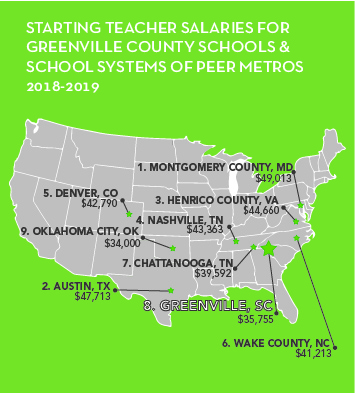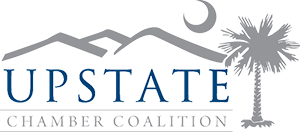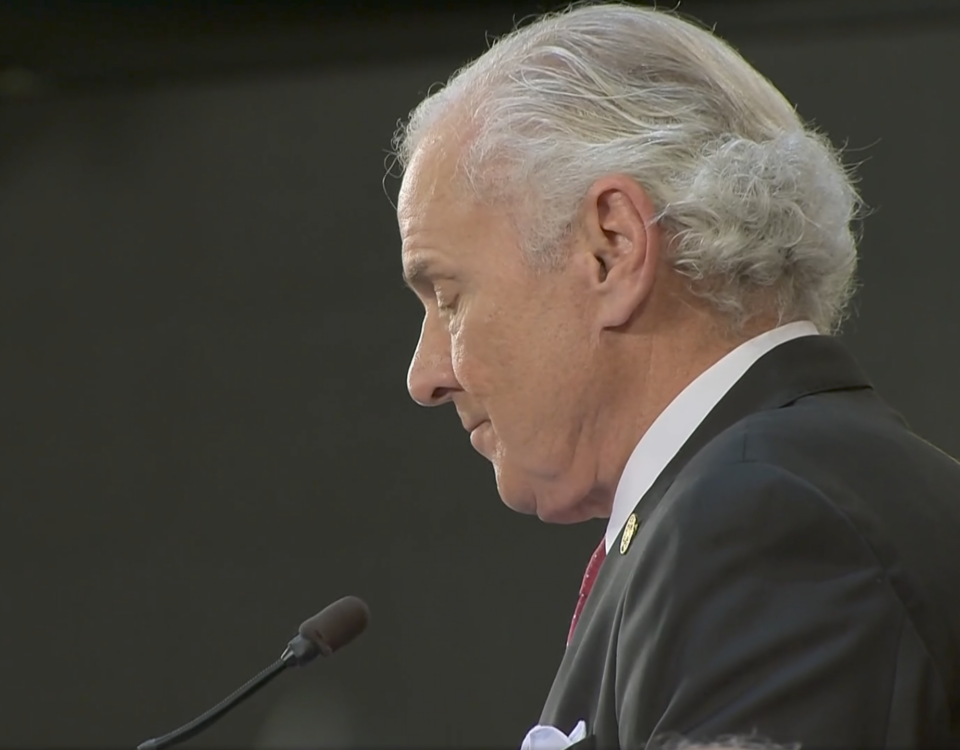
The Friday Five 1.11.19
January 11, 2019
Meet the Team: Catherine Demaret
January 18, 2019Higher Teacher Pay is the Path to Economic Growth

Businesses across the Upstate tell us every day that their number one concern is the availability of a trained workforce. The essential building blocks of a strong workforce begin with a strong education system. The essential building blocks of a strong public education system start with high-quality teachers.
It is vital that the General Assembly commit to paying our teachers at least the Southeastern average. The Upstate Chamber Coalition lists this as our top priority for 2019. We were excited to have Governor McMaster support this call in his executive budget.
This is not about a vanity number and a talking point. Teachers can certainly point to many other critical items they need to make their teaching experience better. Raising teacher pay is simple, overdue, and achievable. It will give our state’s teachers concrete proof that we value them while we continue work on other items that are harder to unravel – such as testing, paperwork, student mental health, and professional development. If you pay people what they’re worth and commit to them, they’ll give you time to fix other problems.
Upstate school districts pay higher than that South Carolina average. We’re blessed by a strong tax base and a booming economy. But just as we compete with cities across the country and around the world for jobs and talent, we do the same thing for teachers – whether those are elementary school teachers or high school STEM teachers.
 In a recent survey of communities the Greenville Chamber frequently looks at when we study economic development, community development, or policy, Greenville ranked 8th out of the 10 communities for starting teacher pay. When you look at what teachers are paid after five or 10 years of service, it gets worse. That is manifesting itself in the epidemic of teachers leaving the profession after only a few years of service. As with general corporate recruitment, we’re not necessarily competing against other Upstate communities, we’re competing with Austin, Raleigh, Nashville, Chattanooga, and Atlanta. We’re competing across the country and around the world.
In a recent survey of communities the Greenville Chamber frequently looks at when we study economic development, community development, or policy, Greenville ranked 8th out of the 10 communities for starting teacher pay. When you look at what teachers are paid after five or 10 years of service, it gets worse. That is manifesting itself in the epidemic of teachers leaving the profession after only a few years of service. As with general corporate recruitment, we’re not necessarily competing against other Upstate communities, we’re competing with Austin, Raleigh, Nashville, Chattanooga, and Atlanta. We’re competing across the country and around the world.
Actually, in South Carolina, we’re not competing. We want to attract the best and the brightest in other professions. Why don’t we do the same with teaching?
There are certainly other important funding and classroom reforms, and many of those reforms are also way overdue. The last time there were significant changes to the state’s education funding system, we were living in a world of rotary-dial phones, mainframe computers, and you had four channels on your television.
Our Chambers understand employee recruitment, competition with other communities, and the value of the public education system in teaching the next generation of citizens. So as you would do in your business when you are getting beat by your competitors for talent, you raise salaries to recruit the best and the brightest.
When we achieve the goal of getting our teachers to the Southeastern average, we believe it’s time to look at other reforms, such as: Should we pay middle- and high-school STEM teachers (and other high-demand teachers) on a different salary scale? The laws of supply and demand would dictate so.
We have been encouraged by discussions in the past month with legislators across the state – legislators of all ideologies – who agree with getting South Carolina teacher pay to the Southeastern or National average. We pledge our support and offer any and all assistance we can to our Upstate legislators to get our state there.
Our teachers, our economy, and our children deserve immediate action.




